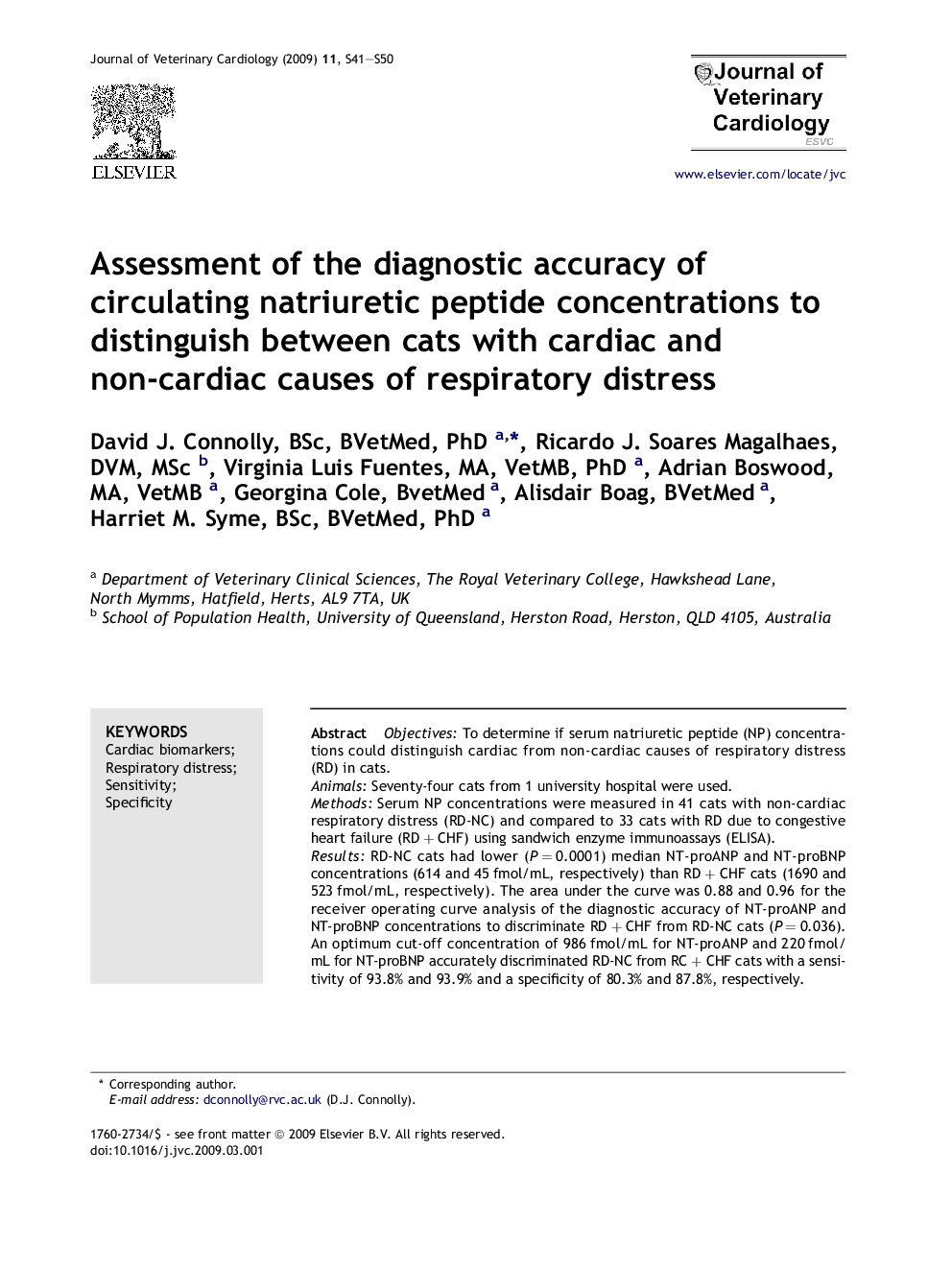| Article ID | Journal | Published Year | Pages | File Type |
|---|---|---|---|---|
| 2400276 | Journal of Veterinary Cardiology | 2009 | 10 Pages |
ObjectivesTo determine if serum natriuretic peptide (NP) concentrations could distinguish cardiac from non-cardiac causes of respiratory distress (RD) in cats.AnimalsSeventy-four cats from 1 university hospital were used.MethodsSerum NP concentrations were measured in 41 cats with non-cardiac respiratory distress (RD-NC) and compared to 33 cats with RD due to congestive heart failure (RD + CHF) using sandwich enzyme immunoassays (ELISA).ResultsRD-NC cats had lower (P = 0.0001) median NT-proANP and NT-proBNP concentrations (614 and 45 fmol/mL, respectively) than RD + CHF cats (1690 and 523 fmol/mL, respectively). The area under the curve was 0.88 and 0.96 for the receiver operating curve analysis of the diagnostic accuracy of NT-proANP and NT-proBNP concentrations to discriminate RD + CHF from RD-NC cats (P = 0.036). An optimum cut-off concentration of 986 fmol/mL for NT-proANP and 220 fmol/mL for NT-proBNP accurately discriminated RD-NC from RC + CHF cats with a sensitivity of 93.8% and 93.9% and a specificity of 80.3% and 87.8%, respectively.ConclusionsSerum NP concentrations were different in RD + CHF cats compared to RD-NC cats. Evaluation of circulating NP concentrations may be helpful in the initial approach to cats presenting with respiratory distress, particularly if advances in ELISA technology result in a rapid cage-side test.
